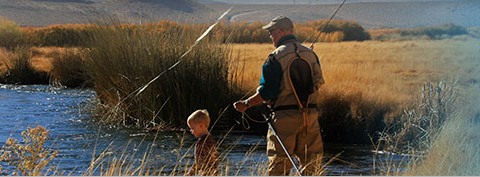Vertebral Fractures
There are many types of vertebral fractures. Some result from low energy falls in older people with softer bone, while others result from high energy falls and accidents like ski crashes and motor vehicle accidents. Vertebral compression fractures occur when the normal vertebral body of the spine is squeezed or compressed to a smaller height. The bone collapses when too much pressure is placed on the vertebrae, resulting in pain, limited mobility, height loss, and spinal deformity. In very severe compression fractures the back of the vertebral body is pushed into the spinal canal and pressure is placed on the spinal cord.
Vertebral compression fractures can occur as a result of trauma from a fall, a forceful jump, or a car accident or a tumor that spreads to the spine from elsewhere. Vertebral compression fractures usually are caused by osteoporosis, a condition that causes a thinning of the bone. The thinning bones can cause tiny fractures during normal activities. In severe cases of osteoporosis, a simple movement like bending forward can cause spinal compression fracture resulting in kyphosis, a hump-like curvature of the spine.In younger people, compression fractures usually result from high energy falls, like landing a high ski/snowboard jump too flat or falling off a ladder.
The most common symptom of vertebral compression fracture is severe pain in your back, which worsens on standing or walking and decreases when resting. You may also feel weakness and numbness in the affected areas, disability, and limited spinal mobility. You may also often notice a loss of overall height. Patients who sustain multiple compression fractures may have hunched back (kyphosis or "dowager’s hump"), gastrointestinal problems, hip pain, and shortness of breath.
Your doctor will carefully examine you based on the symptoms and medical history. Your doctor may also recommend other diagnostic tests such as:
- X-ray: A spinal X-ray may be taken to determine the presence of a fracture
- MRI Scan: An MRI of spine may be performed to know if the fracture is old or new and to detect other soft tissue abnormalities
- Bone Scan: A nuclear bone scan may be used to help determine the presence or age of the fracture
- DEXA Scan: Dual Energy X-ray Absorptiometry or DEXA scan, a test to measure bone mineral density, and is typically used to diagnose osteoporosis
Treatment
The treatment for vertebral compression fractures aims at reducing the pain and stabilizing and repairing the fracture. This is best achieved by medications, back braces, bed rest, and physical therapy.
Nonsteroidal anti-inflammatory drugs such as ibuprofen or naproxen may be prescribed to relieve bone, muscle and nerve pain. Your doctor may prescribe a back brace that supports the back and restricts movement.
Surgery may be needed in patients who continue to have severe pain despite non-surgical treatment. Two minimally invasive surgical procedures for treating vertebral compression fractures are kyphoplasty and vertebraplasty, but these have largely fallen out of favor. Most compression fractures are now treated without surgery, except certain higher energy fractures with instability.
Prevention
The most effective way to prevent vertebral compression fractures is to prevent osteoporosis. A well balanced diet, regular exercise program, calcium and vitamin D supplements, smoking cessation, estrogen hormone replacement for women and practicing good posture may help you to prevent osteoporosis.





















